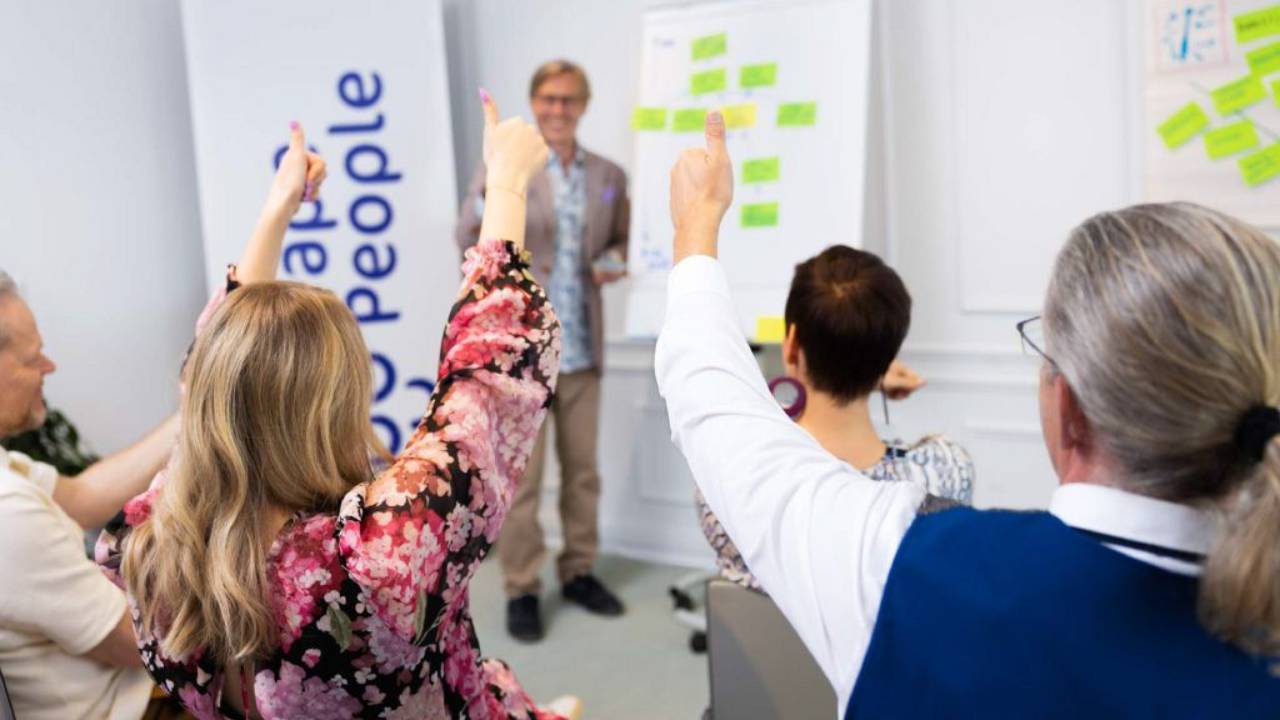The intangibles facilitators must learn

Think of a great leader you have had the pleasure to work with. Someone who ran an engaging meeting. Or perhaps you are thinking of someone with a lot of charisma that had you laughing so much that the minutes flew by, and before you knew it, the two-hour meeting you were dreading had already ended. Can you pinpoint what made this person such an effective leader? Why was time with them both beneficial and enjoyable? Was it their expert use of group tools? Did they clarify previously confusing topics? Perhaps.
At Grape People, we believe that there are eight key competencies that all great facilitators have. You can view these competencies as a strong foundation of a house. On top is this foundation, a facilitator builds with their group tools, leadership theories, and facilitation experience. Some of these eight key competencies are a bit more academic and can be studied, while others can be viewed as leadership intangibles.
The eight key competencies for facilitators are:
You can read a book on choosing the right tools for the job (competency #3). And if you attend a class on workshop design, you will probably be well on your way to understanding and implementing workshop stages correctly (competency #2).
But what about appearing open and helpful to meeting attendees (competency #7)? Or remaining neutral to the content or outcome of a session, even if you are an essential stakeholder (competency #1)? This blog will touch on these competencies that are a bit less concrete and harder to learn and master simply by studying.
Having a good group presence
Presence is about observing and listening to the group. Does someone look like they need help? Then you can go over to them and check in. Conversely, do you look like you are open and available as a resource? Do not assign an activity that takes ten minutes to complete, and then leave the room or check your phone. Great facilitators show that they are an available resource through attentiveness and body language.
A present facilitator can tell when to push people back on track and stop counterproductive behaviours. In a dream world, everyone would hang off your every word and give you their complete and undivided attention. Unfortunately, the reality is a bit different, and there are times when people will tune out or begin being drawn to their cell phones. If you spend enough time leading groups, you will see these behaviours from time to time. Do not ignore people if you see them get off task. Instead, ask people to actively participate by getting back on track and following along with the workshop schedule. If this does not work, be candid and ask why these things are happening. Don’t take it personally or get offended. Instead, figure out why these behaviours are happening. Then you can intervene and propose an activity or plan for the rest of the workshop that everyone agrees to follow.
Having a neutral role
Great facilitators always try to be 100% content neutral. This means that the facilitator does not show any preference for the group's ideas. A content-neutral facilitator also does not feed people answers if they are stuck. This can be difficult. If you are leading a group, you want things to go well, and it might feel uncomfortable if people get stuck at a certain point. Even if it feels clumsy and you have a helpful solution on the tip of your tongue to give to the group, resist the temptation to jump in with a helpful answer. It is a harmful shortcut to try and ensure success by providing hints or suggesting ideas to the group.
Your suggestions are probably going to complicate the group decision-making process. So instead, focus on leading the group process and making sure that the meeting or workshop runs smoothly. Remaining neutral implies not pushing for any specific outcome, even if you are invested in the results.
If someone asks for your opinion about a challenging situation, you can acknowledge that it is difficult but do not suggest what to do. Let people know you understand that it is difficult, but at the same time, give the group complete decision-making control.
If you have made it this far, congratulations! You have now been introduced to two key competencies of facilitators. The foundation of your facilitative house is being built! But what about the other six key competencies? Also, there is plenty more to learn about maintaining a great presence and being content neutral. So now what? Good news: A complete and completely free guidebook on the Eight Key Competencies of Facilitators is coming out soon, so sign up for the Grape People Newsletter to find out more.
Thanks for reading, and good luck as you continue your facilitation journey!
Feel free to reach out in case you would like a tailored training
for your team or organization: [email protected].
We are more than happy to help you!


